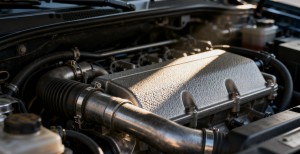The automotive aftermarket industry is evolving rapidly, driven by technological advancements and shifting consumer demands. For professionals seeking reliable pipe components for vehicle maintenance and repair, understanding these trends is essential. This article explores the latest innovations in automotive pipe components, particularly focusing on exhaust system pipes and engine pipes, and highlights how these developments can benefit your business.
1. Lightweight Materials Enhancing Performance and Efficiency
One of the most significant trends in automotive pipe components is the shift toward lightweight materials. Advanced thermoplastics and high-strength alloys are increasingly replacing traditional metals, offering substantial weight reductions and improved fuel efficiency without compromising durability .
Thermoplastic Innovations: A notable example is the use of materials like Amodel® PPA, a robust thermoplastics, in components such as motor oil guides and transmission oil pipes. This material achieves approximately 47% weight reduction and 36% cost savings compared to conventional metal solutions. Its resistance to automotive fluids ensures longevity, even under high-temperature conditions .
High-Strength Steel and Aluminum Alloys: These materials are critical for applications requiring exceptional strength and corrosion resistance, such as exhaust system pipes and engine components. Their adoption supports the industry’s move toward lightweight design, which is crucial for both traditional and electric vehicles .
2. Advanced Anti-Crystallization and Anti-Clogging Technologies
Crystallization and clogging in components like urea nozzles are common issues in modern exhaust aftertreatment systems. Recent innovations address these problems head-on, improving reliability and reducing maintenance needs.
Gas Purge Channels: New urea nozzle designs incorporate a gas purge channel that uses high-pressure gas to clear residual urea solution from the injection channel after each use. This proactive approach prevents crystal formation, a primary cause of clogging, thereby enhancing system longevity and reducing downtime .
Integrated Cooling Structures: Some advanced exhaust aftertreatment systems now feature cooling channels built around the urea nozzle. By leveraging the vehicle’s air conditioning module to dissipate heat, these systems maintain optimal operating temperatures, further minimizing the risk of crystallization and ensuring consistent performance .
3. Enhanced Safety with Impact-Resistant Structures
Safety remains a top priority in component design. Recent patents highlight developments in impact-resistant structures for critical fluid-carrying components, such as fuel lines and brake pipes.
Buffering and Energy Absorption: Innovations include impact-resistant buffer sleeves strategically placed at bends and connection points of tubes. These designs often incorporate energy-absorbing damping rods and connection springs within anti-impact frameworks, which help absorb and dissipate force during collisions. This not only protects the piping itself but also enhances overall vehicle safety by preventing leaks or ruptures in critical systems .
4. Simplified Assembly and Maintenance through Modular Design
Modular design is gaining traction for its ability to streamline assembly, reduce costs, and simplify repairs. This approach is particularly beneficial for cooling system pipes and other engine pipes that require regular maintenance.
Plug-in Connector Systems: For instance, newer cooling pipe assemblies use elastic corrugated pipes with plug-in connectors that feature conical sealing surfaces and multiple sealing rings. This modular design allows for easier installation and replacement of individual sections, reducing labor time and costs. It also facilitates bulk assembly and targeted part replacements, minimizing waste .
5. Smart Engineering for Improved Functionality
Beyond materials and safety, smart engineering refinements are optimizing the functionality of automotive pipes.
Optimized Airflow Management: In engine intake systems, for example, components like boosted intake manifold assemblies are being redesigned with slight angular offsets (e.g., a 6-degree clockwise shift in flange mounting points). This improves spatial efficiency in cramped engine bays, ensures better airflow distribution, and enhances overall engine performance .
Specialized Valve Integration: The incorporation of Tesla valve segments in pre-combustion chamber intake pipes is another innovation. These valves help manage gas flow direction and protect components like one-way valves from high-temperature, high-pressure gases in the pre-combustion chamber, thereby increasing the component’s service life .
Conclusion: Embracing Innovation for Superior Aftermarket Solutions
The landscape of automotive aftermarket pipe components is being reshaped by trends toward lightweight materials, advanced anti-clogging technologies, enhanced safety features, modular designs, and smart engineering. For those in the automotive aftermarket sector, staying informed about these innovations is key to sourcing high-quality, reliable parts that meet the demands of modern vehicles.
By prioritizing components that incorporate these advancements, businesses can ensure they offer products that contribute to vehicle efficiency, safety, and longevity. As the industry continues to evolve, a focus on innovation will be essential for maintaining a competitive edge.
Explore our catalog to discover a wide range of cutting-edge automotive pipe components designed to meet the highest standards of performance and reliability.
Post time: Sep-26-2025
